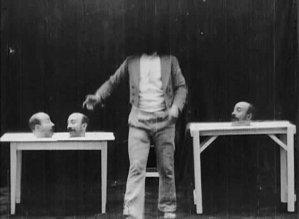Directed by: George Albert Smith
While Méliès experimented with the double exposure technique in films such as Un homme de têtes / The Four Troublesome Heads (1898), George Albert Smith did the same across the Channel in The Mesmerist (1898) and Photographing a Ghost (1898). In Santa Claus, he used the technique to simultaneously show a child sleeping and Santa Claus climbing down the chimney, creating cinema’s earliest known example of parallel action. It also marks one of the earliest depictions of Santa Claus in film.

Bibliography
Brooke, M. (n.d.). ‘Santa Claus (1898)’, BFI Screenonline. Available at: http://www.screenonline.org.uk/film/id/725468/index.html [Accessed: 3 January 2022].
Casey, K. (2013). ‘Film Review: G.A. Smith’s Santa Claus (1898)’, The Totality. Available at: http://www.the-totality.com/2013/05/film-review-ga-smiths-santa-claus-1898.html [Accessed: 19 December 2018].
IMDb contributors (n.d.). ‘Santa Claus (1898)’, IMDb. Available at: http://www.imdb.com/title/tt0242849/ [Accessed: 3 January 2022].


